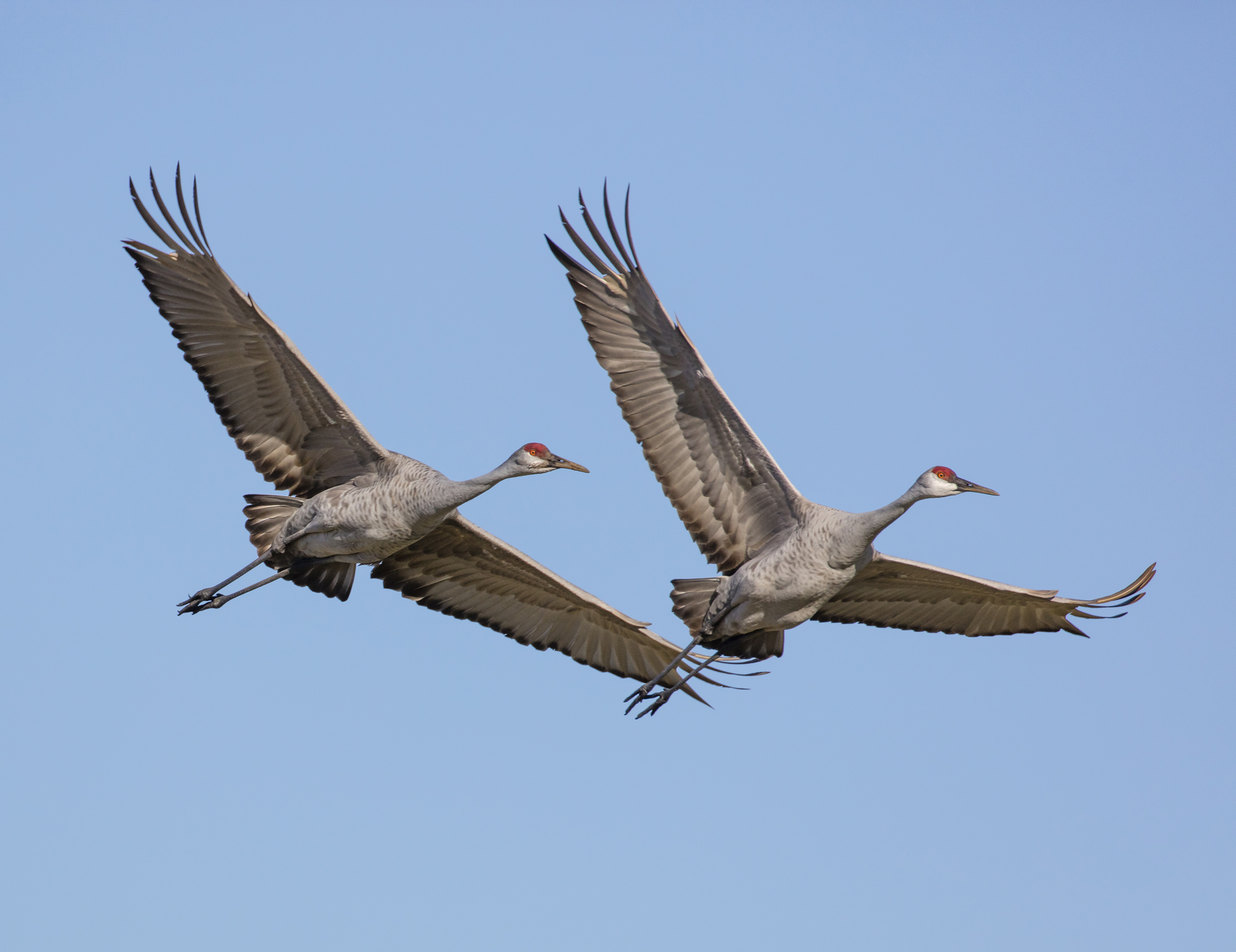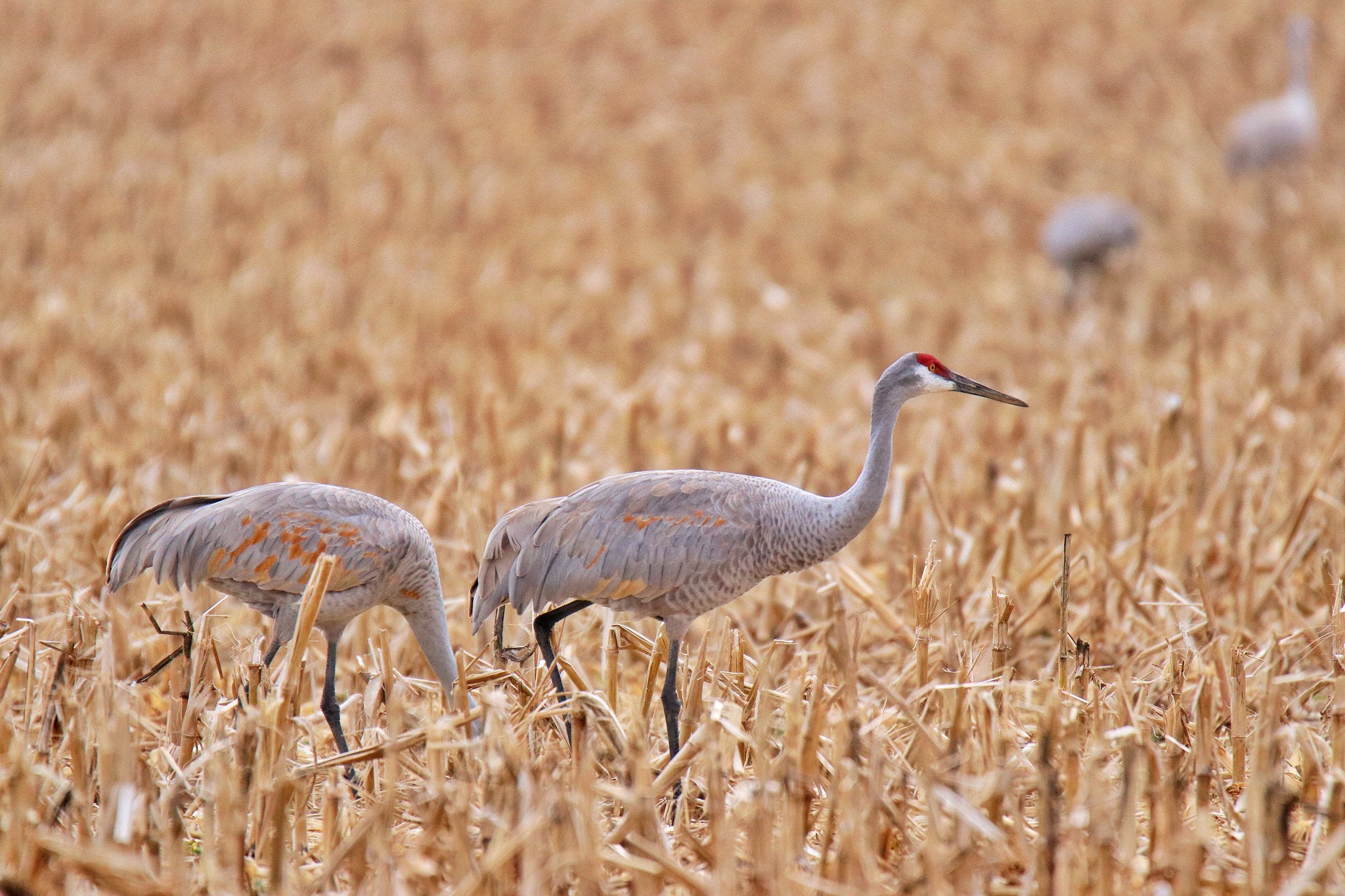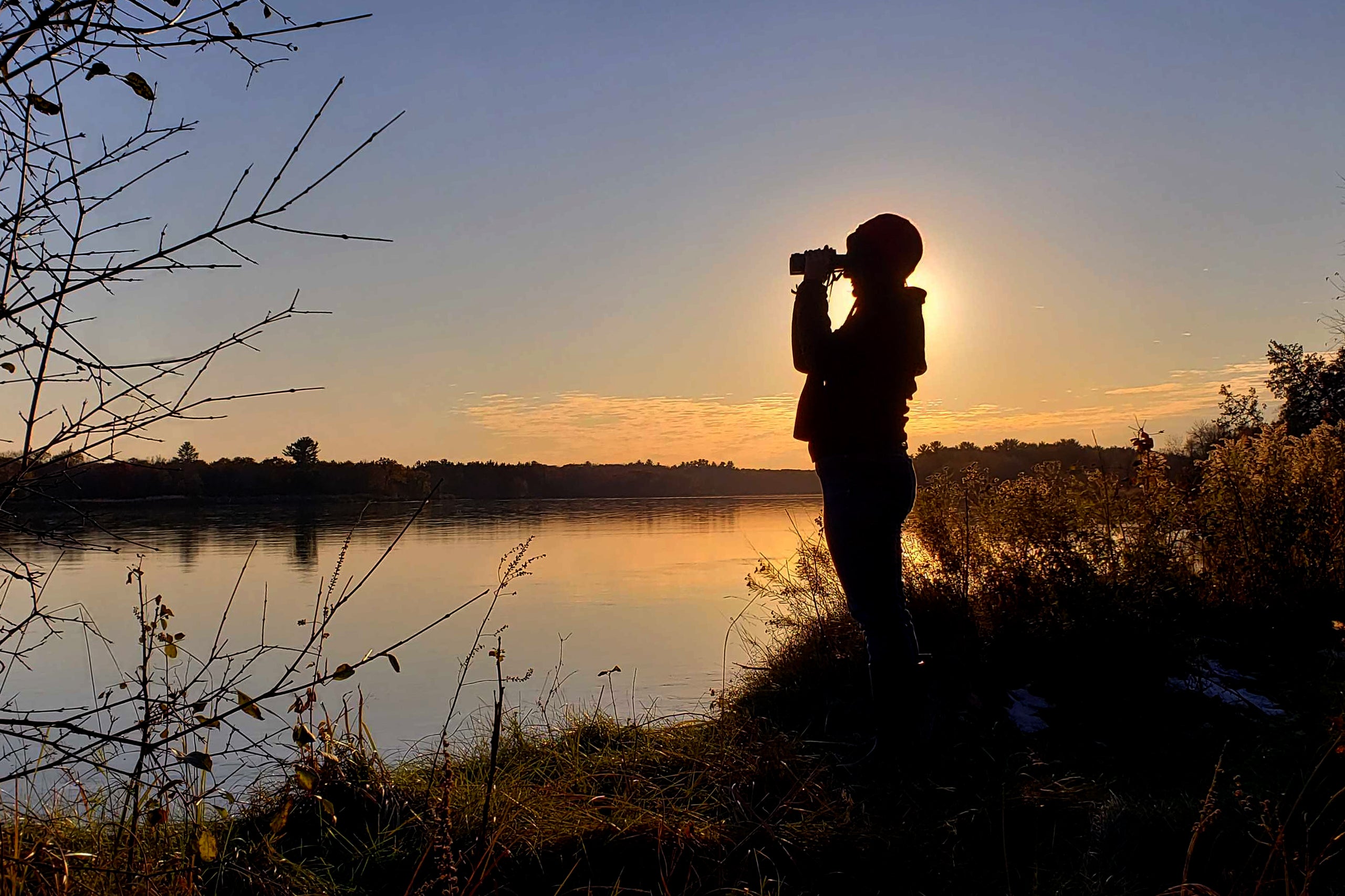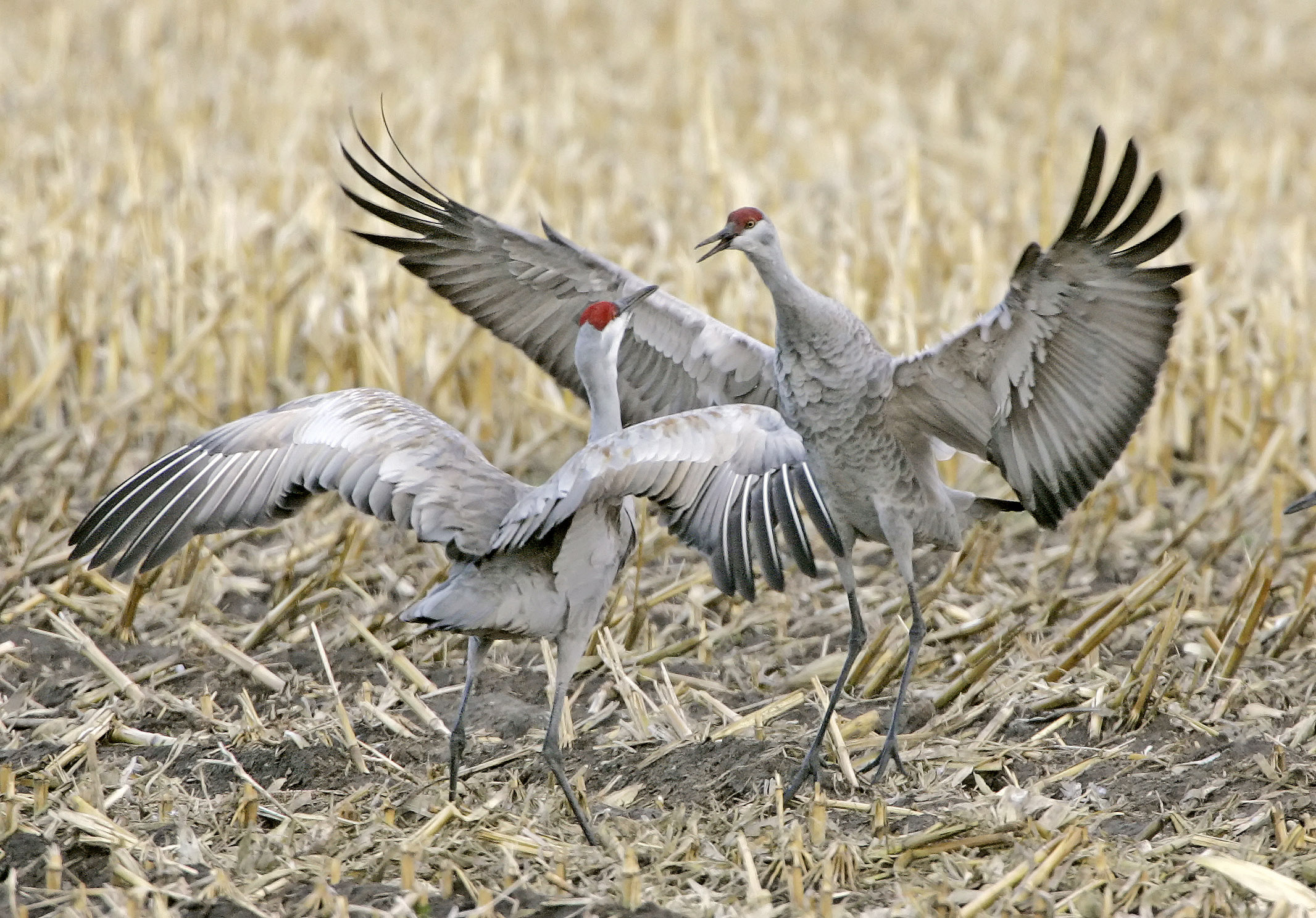A legislative study committee debated a package of draft legislation to tackle management of Wisconsin’s growing sandhill crane population Wednesday, including a proposal to hunt the birds. The committee will vote on the bills at its final meeting next month.
The committee of lawmakers, conservationists and farmers met Wednesday to discuss five draft proposals. The bills would direct the Department of Natural Resources to hold a sandhill crane hunt pending federal approval, allow hunters to obtain state permits to kill problem birds and create a framework for reimbursements or rebates to corn growers who incur costs from seed treatments to prevent crop damage.
After being nearly hunted to extinction in the late 1800s, the eastern population of sandhill cranes, which includes Wisconsin, has rebounded to more than 110,000 birds in the most recent count. As their population has grown, the birds have caused crop losses mostly for Wisconsin corn and potato growers that totaled nearly $2 million last year.
Stay informed on the latest news
Sign up for WPR’s email newsletter.
Conservationists on the committee urged lawmakers to hold off on a bill authorizing a hunt, including Anne Lacy, director of eastern flyway programs for the International Crane Foundation.
“I would put forth that we can’t, shouldn’t, agree on specifics to a hunting bill until a new management plan is created that might change things,” Lacy said, adding the plan is outdated.
The existing management plan was developed by the Mississippi and Atlantic Flyway Councils and approved in 2010. It calls for a potential crane hunt once their numbers exceed a range between 30,000 to 60,000 birds.
Meleesa Johnson, executive director of Wisconsin’s Green Fire, said a lot has changed since the plan was first approved.
“I’m just having a really hard time with this cart-before-the-horse sort of thing,” Johnson said.
Under state law, farmers are currently unable to receive payments for crop damage through the state’s wildlife damage abatement program unless the DNR authorizes a hunt. Pending approval, a draft bill would direct the DNR to authorize a hunt and limit hunters to one permit per season at a cost of $20 for state residents and $100 for nonresidents.
The committee’s chair, Rep. Paul Tittl, R-Manitowoc, disputed that the U.S. Fish and Wildlife Service, which has final say over any hunt, would allow a season if the population were at risk.
“I just can’t picture that,” Tittl said. “They will have the necessary information, or they won’t allow the hunt.”
Sandhill cranes are currently hunted in 18 states, three Canadian provinces and Mexico.
Todd Schaller, vice president of Wisconsin Waterfowl Association, said he doesn’t anticipate an updated plan would show that Wisconsin’s hunt or existing hunts would put the eastern population at risk.
“That would have been flagged long ago,” Schaller said. “While I like the new data and information, hopefully Wisconsin moving forward with a hunt proposal will (push) the Fish and Wildlife Service (to) move faster in that plan.”
Kent Van Horn, a former DNR migratory game bird ecologist, told the committee in August that the state wouldn’t be able to lower the population under the existing management plan becaused any season is structured to be sustainable.
The committee also weighed proposals that would increase wildlife damage surcharges on permits and allow the state to issue depredation permits to control cranes causing crop damage. Currently, such permits are only authorized by federal wildlife regulators. They’ve issued around 200 depredation permits for sandhill cranes in Wisconsin each year.
Around 3 million of the state’s 4 million acres of corn are at risk of damage from sandhill cranes. It’s estimated it would cost farmers between $30 million to $45 million to use Avipel, a seed treatment, on that acreage to deter cranes. The committee weighed two draft bills that would set up accounts that the DNR may use to issue reimbursements or rebates to corn growers for costs related to seed treatments to repel the birds.

Concerns of bias surround committee’s work
The committee also discussed a pair of documents portrayed as “findings of fact” and “conclusions” on the migratory birds that were written by an advocate for hunting cranes.
Bruce Ross, executive director of the Wisconsin Waterfowl Association, said he wrote the documents to inform the committee’s process as they reached their own conclusions on legislation. The author’s identity was not made clear to the committee. The documents raised concerns about bias from Johnson with Wisconsin’s Green Fire.
Ross said it wasn’t intended to influence the committee’s decision-making.
“I’m not worried about the conclusions of the committee,” Ross said. “Because if you follow the science, if you follow the data, if you follow the law, there’s really very little question as to whether a sandhill crane hunt is justified in Wisconsin.”
Tittl said during the meeting Wednesday that he worked with other people on the documents, noting that’s how bills are developed in the Legislature.
“I tell everybody, ‘Good legislation doesn’t come from a bunch of politicians sitting around in Madison. It comes from people with lived experience,’” Tittl said.
In 2021, Tittl previously introduced a bill that would allow hunting of sandhill cranes, but the proposal failed to advance in the Legislature.
The documents indicated hunting the birds could stabilize the sandhill crane population. However, Johnson with Wisconsin’s Green Fire said she didn’t think the documents represented findings of fact.
“It’s a finding of information that was presented,” Johnson said. “I think we need to be clear about that.”
Committee members made their own changes to those documents, and they debated the management plan for cranes. Some conservationists on the committee maintained that hunting will have no impact on crop damage, but waterfowl hunting advocates maintained it would have some effect to control birds causing damage.
In Wisconsin, only 17 percent of almost 2,800 people surveyed last December support a hunting season on sandhill cranes. That’s according to a study led by researchers at the University of Wisconsin-Madison and funded by the International Crane Foundation.
Hunting migratory birds is generally restricted under federal law, but the U.S. Fish and Wildlife Service can issue regulations to enable a hunt. The process involves multiple steps that require approval from the federal agency and the Mississippi and Atlantic Flyway Councils, as well as state authorization.
The committee will meet next on Dec. 10.
Wisconsin Public Radio, © Copyright 2025, Board of Regents of the University of Wisconsin System and Wisconsin Educational Communications Board.


